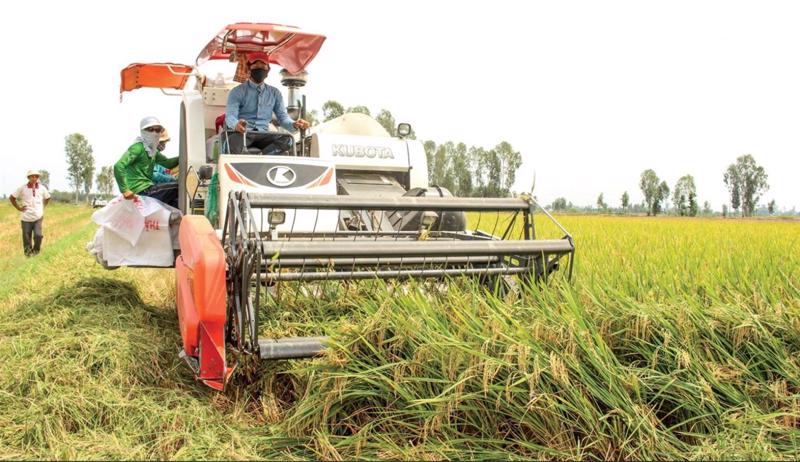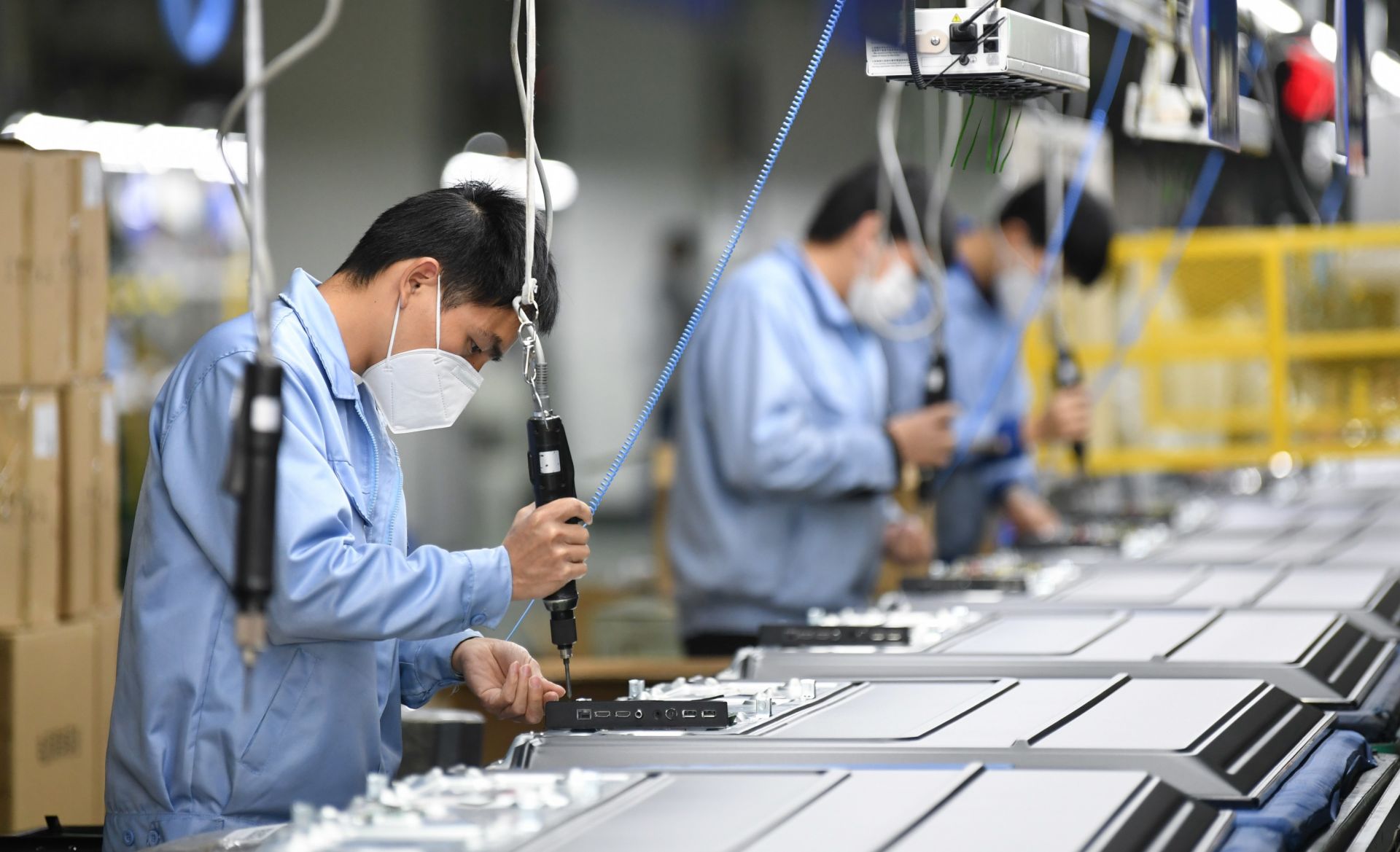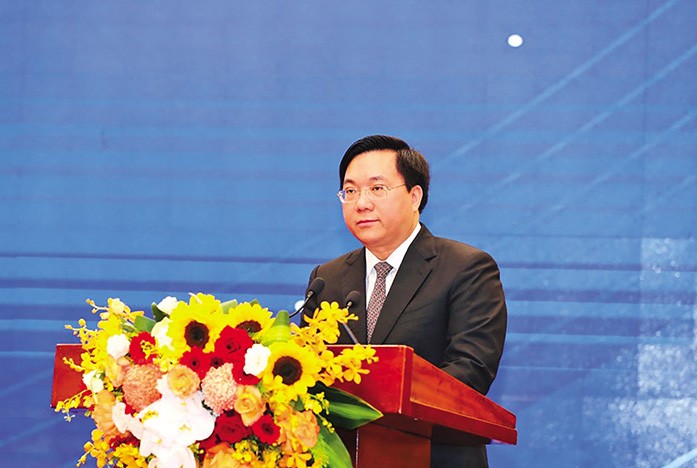Vietnam is a potential market for companies engaged in the manufacturing of agricultural machinery and equipment
23/01/2024The agriculture sector in Vietnam has set comprehensive mechanization targets for the year 2030, aiming for synchronized mechanization across various areas: crop cultivation reaching 70%, livestock farming achieving 60%, aquaculture production hitting 90%, fisheries exploitation and preservation reaching 95%, forestry attaining 50%, and sericulture reaching 90%.

On the afternoon of January 15, 2024, the Institute of Agricultural and Post-Harvest Technology (Ministry of Agriculture and Rural Development), in collaboration with the Italian Embassy in Vietnam, organized an online seminar on “Agriculture and Mechanization of Agriculture in Vietnam.”
LIMITATIONS IN AGRICULTURAL MECHANIZATION
Chairing the seminar, Mr. Phung Duc Tien – Deputy Minister of Agriculture and Rural Development, highlighted some outstanding achievements of the agricultural sector in 2023, including an export surplus of over 12 billion USD and a GDP growth of 3.83% – a record high for many years.
However, alongside the accomplishments, the Deputy Minister also pointed out the existing limitations in Vietnam’s agricultural production. These include a relatively high proportion of small-scale production, low labor productivity, low mechanization rates, and a low level of overall agricultural mechanization, which is concentrated in certain stages and types of products, leading to insufficient competitiveness in agriculture.
“The increase in the processing and deep processing ratio of the sector is still slow. While the world has moved towards packaged exports, Vietnam mainly exports in raw form. The volume of exports of agricultural, forestry, and aquatic products continues to increase, but mostly in raw form. Therefore, it has not created a breakthrough, posing a significant obstacle to improving quality, value, and building a brand on the international market,” noted Mr. Tien.

The causes of the current situation were analyzed by Deputy Minister Phung Duc Tien, who attributed it to the relatively low level of scientific and technological expertise. The application of scientific and technological advancements, as well as compliance with national and international quality standards, remains limited. The domestic machinery industry has not met the requirements for agricultural production equipment.
On behalf of the Ministry of Agriculture and Rural Development, Deputy Minister Phung Duc Tien pledged to research and consider implementing mechanisms and policies to promote the mechanization of agriculture and attract foreign investment in the production of agricultural machinery. This is a crucial factor before advancing and intensifying mechanization, improving quality, efficiency, and reducing losses in agriculture.
“Currently, there are 1,803 mechanical enterprises in the country, but they only meet about 32% of the demand for agricultural machinery in Vietnam. Additionally, there is still a lack of legal frameworks and investment in inspection and quality control of agricultural machinery and equipment,” said Deputy Minister Phung Duc Tien.
According to Mr. Pham Anh Tuan, Director of the Institute of Agricultural and Post-Harvesting Engineering and Technology, the level of mechanization in Vietnam’s agriculture is still low compared to other countries in the region and the world. The field of forestry has the lowest level of mechanization, at only around 30%.
The comprehensive mechanization of agricultural production still faces challenges, such as the manufacturing of machinery and equipment not meeting the requirements in terms of variety and quantity. The power machinery in Vietnam lags behind the average equipment level in ASEAN countries. Domestic manufacturers have a relatively low market share, and the domestic production capacity of machinery only meets 32% of the market demand. Meanwhile, a significant portion of the market demand for agricultural machinery is supplied by imported products, accounting for about 60-70%.
OPPORTUNITIES FOR EUROPEAN BUSINESSES TO INVEST
Mr. Fabio De Cillis, Director of the Italian Trade Agency in Vietnam, assessed that foreign businesses, especially Asian suppliers from China, South Korea, and Japan, are dominating the agricultural machinery market in Vietnam. In contrast, European businesses have limited coverage in the Vietnamese market because Vietnamese consumers traditionally consider European products expensive.
“Italy usually maintains its position among the top 20 machinery suppliers to Vietnam and is among the top 3 major suppliers in Europe. Hopefully, the two sides will soon establish a close cooperation relationship from distributors, agents to local manufacturers,” said Mr. Marco Della Seta, the Italian Ambassador to Vietnam.
“Due to the high demand for agricultural machinery and the limited domestic production capacity, there is still considerable room for mechanization and modernization. Foreign companies can seize this opportunity by providing advanced technology, suitable solutions, and efficient agricultural machinery to meet the growing demand and contribute to the development of the industry in Vietnam,” shared Fabio De Cillis.
The development of smart agriculture is one of the directions in restructuring the agriculture sector and combating climate change in Vietnam. This presents an opportunity for Italian companies to contribute to the development of smart farming methods, with cost-effective solutions that adapt well to local farmers’ needs, Fabio De Cillis suggested. He also emphasized that European businesses, including Italian enterprises, need to approach the market dynamically, evaluate carefully the most suitable products for promotion in specific target areas, and conduct thorough market research and analysis to determine the most effective and efficient strategies for market penetration and expansion in Vietnam.
Speaking at the seminar, representatives of some Italian businesses noted that the openness in international trade in Vietnam is an attractive incentive for European companies to engage in business activities in Vietnam. Moreover, the market for agricultural machinery and equipment is potential, offering positive opportunities for foreign businesses and investors. Italy, with its background in agriculture, especially the well-known automaker Lamborghini originating from a tractor manufacturing plant, has similarities that support the machinery market in Vietnam. Despite having substantial potential, most equipment in Vietnam lags behind the regional and global average.
After years of research and market penetration, Italian distributors decided to invest more in the network of agents and distributors to enter the Vietnamese market. These intermediary distributors play a crucial role in creating favorable conditions for distributing and accessing agricultural machinery.
Must Read

2023 PARTICIPANT LIST


[Seminar] INDUSTRIAL METROLOGY


MTA Vietnam 2022 Webinar


ADB is optimistic about Vietnam’s economy


MTA Vietnam 2021 x Bystronic Webinar


CONFERENCE SERIES


ONLINE BUSINESS MATCHING PROGRAMMES
You may be interested in




REPORT ON THE PRODUCTION AND BUSINESS TRENDS OF THE PROCESSING, MANUFACTURING INDUSTRIES IN THE FIRST QUARTER OF 2024 AND FORECAST FOR THE SECOND QUARTER OF 2024


Industrial production in the first two months of the year increased by 5.7% compared to the same period


Việt Nam có thể trở thành ‘con rồng AI’


Vietnam is ready to welcome the wave of investment in smart manufacturing chains.


Humanoid robot converses with OpenAI language AI


Boeing supplier greenlighted to build $20M plant in Vietnam


Vietnam is a potential market for companies engaged in the manufacturing of agricultural machinery and equipment


‘The Giant’ Goertek is expected to invest over 6,800 billion VND in Vietnam to expand production. Which locality will be chosen?

























